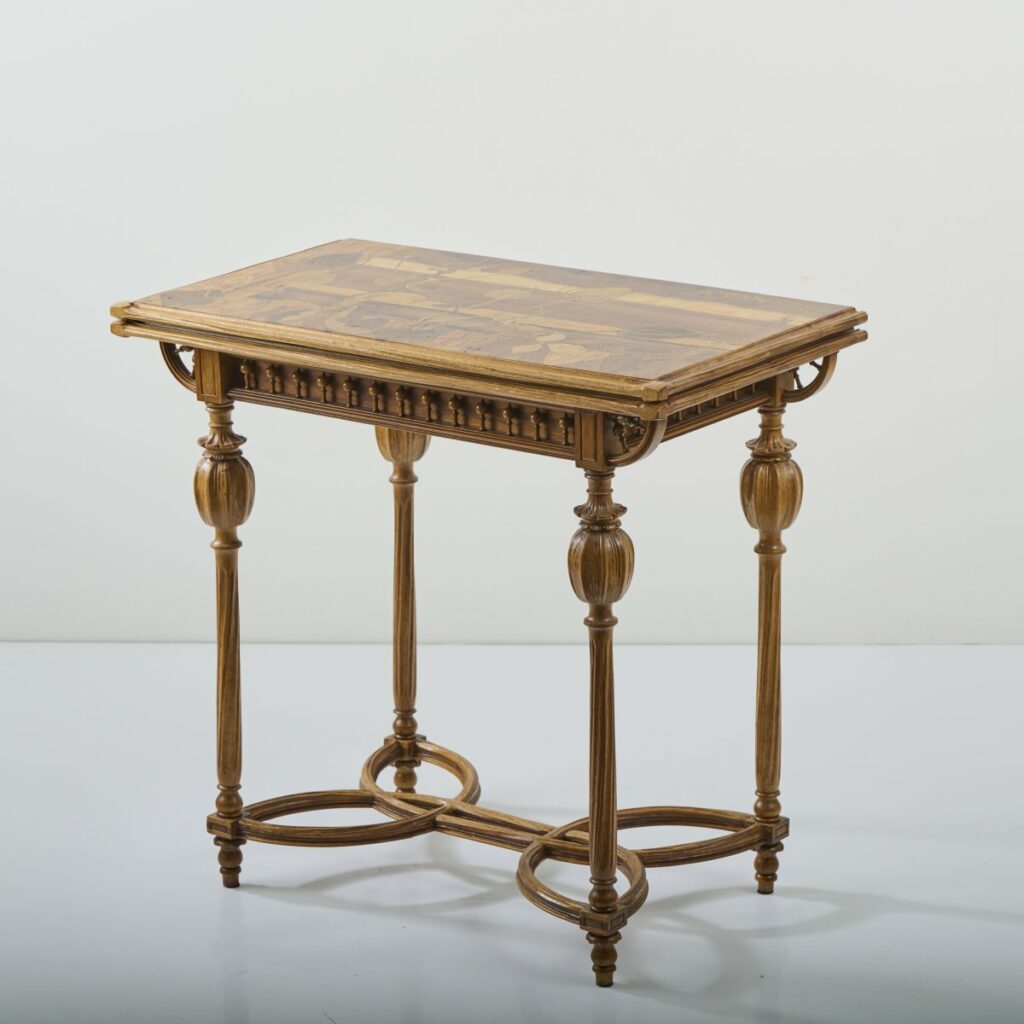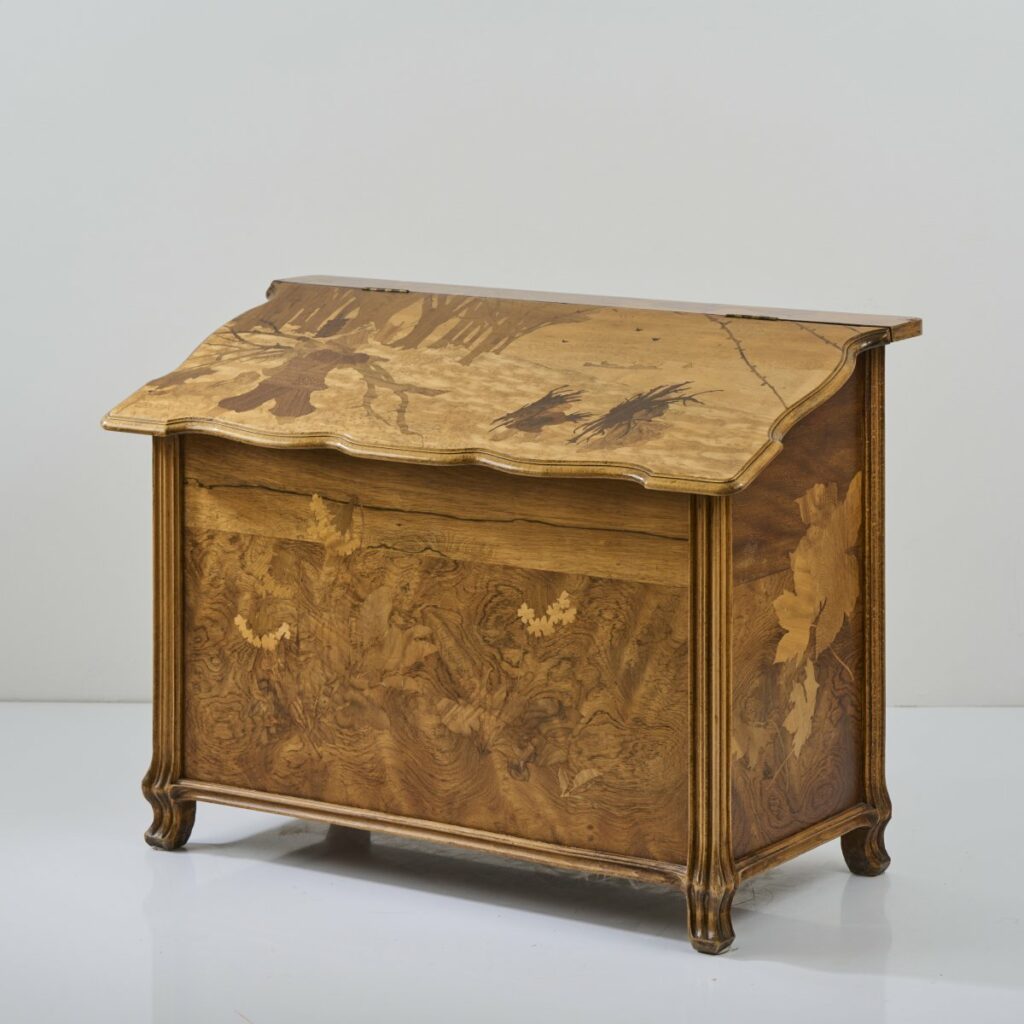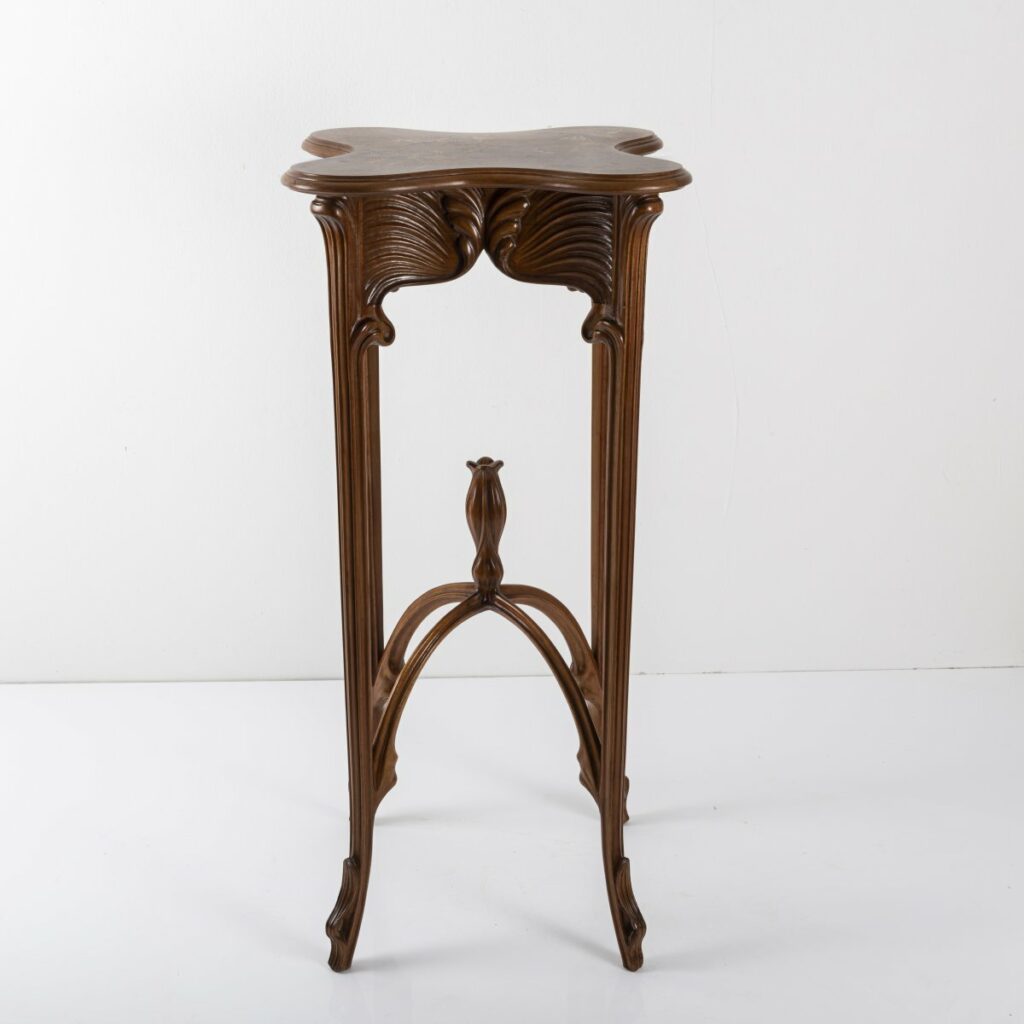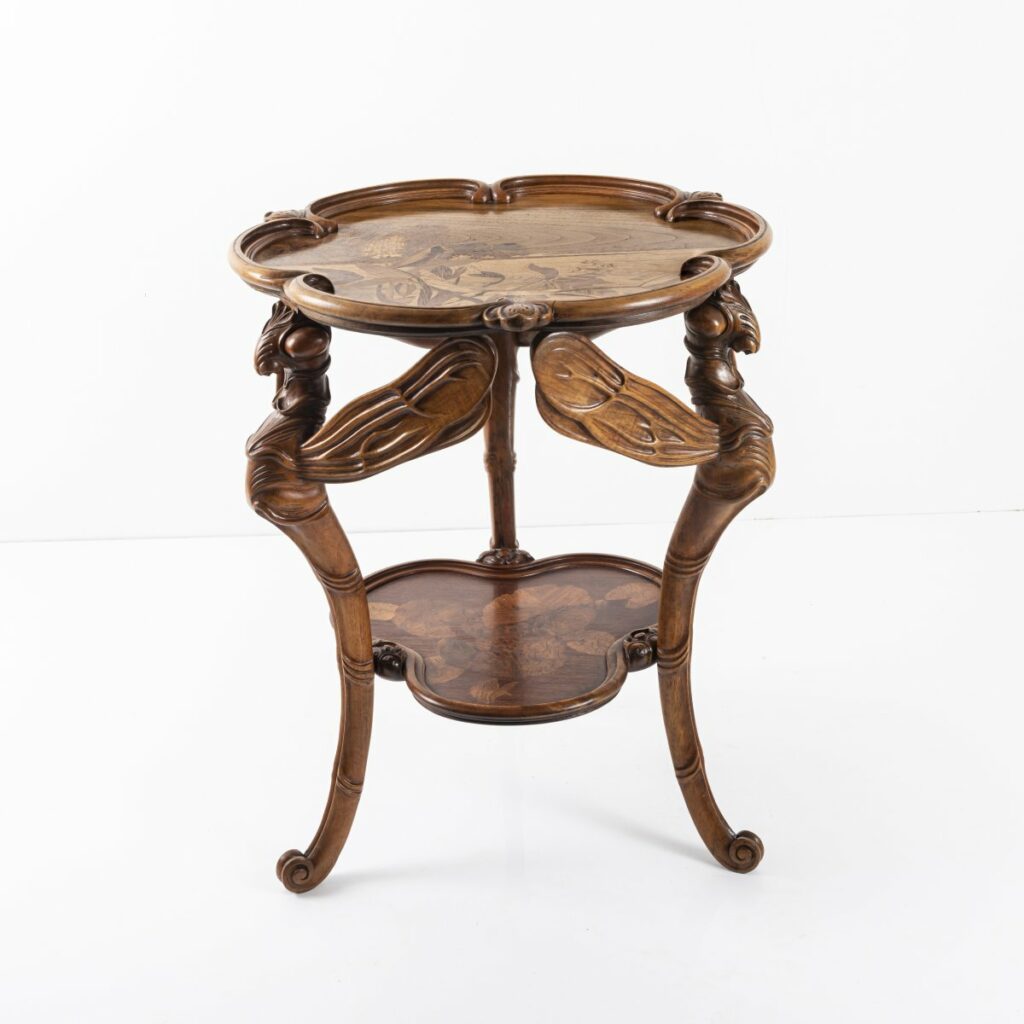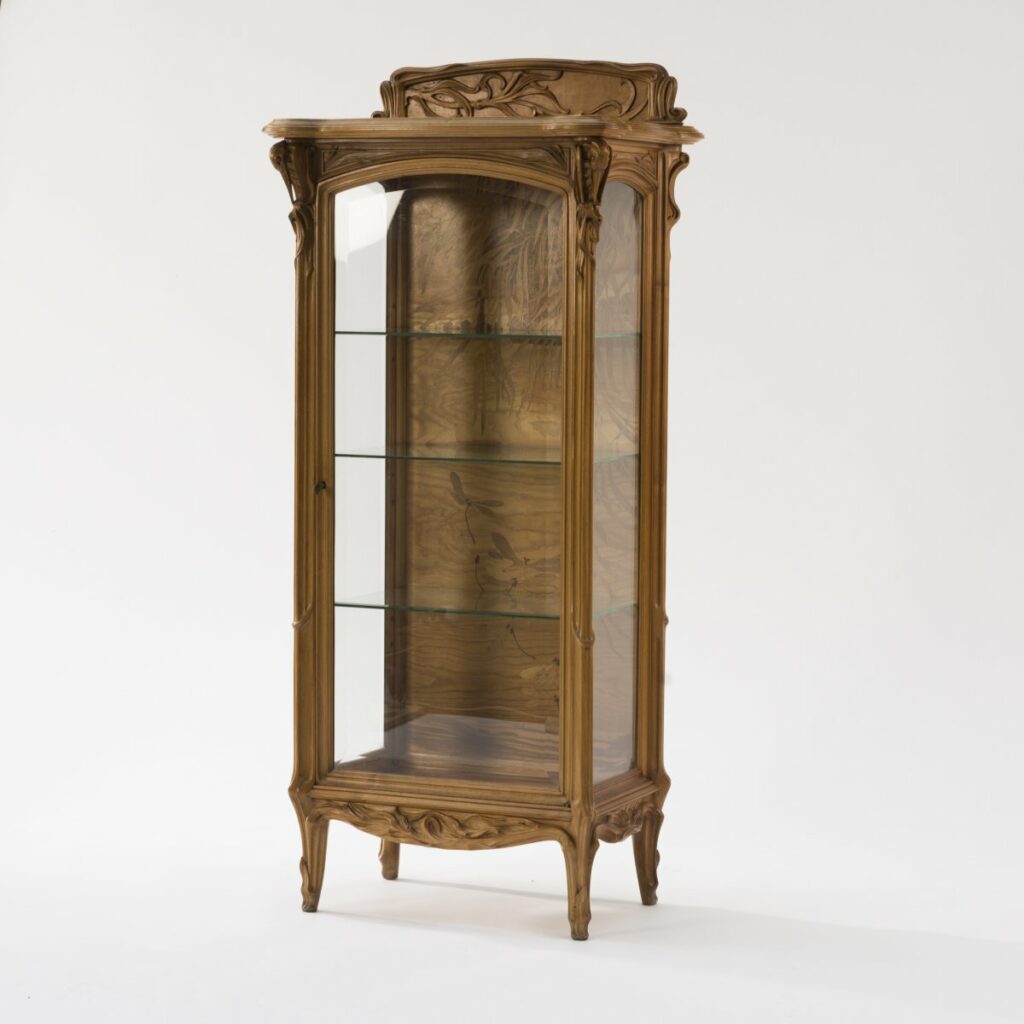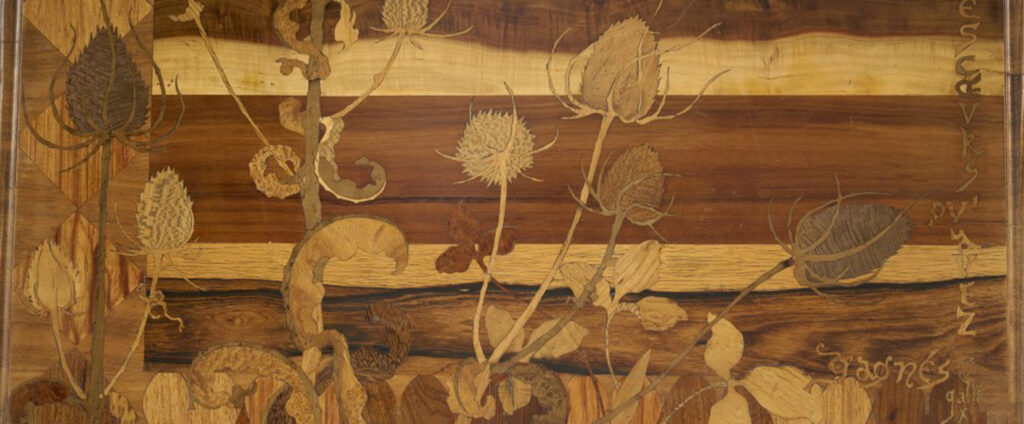
Nature and Truth – The art of furniture by Émile Gallé
“What noble nuances Gallé elicits from the heart of the oak, what harmonious contrast of tones when a leaf contrasts with the color of the trunk.” With these poetic words, Marcel Proust, a friend of the craftsman Emile Gallé (1846-1904) at the time, praised the sensitivity and taste with which the artist designed his furniture. The poet was enraptured by the subtlety of the works and particularly sensitive to the mysteries and moods that enveloped them, as it were, like layers in his eyes. Thus, in addition to the imaginative and quality craftsmanship, the fascination of Gallé furniture is certainly also due to the fact that – based on the pantheistic worldview of their creator – their artistic design is ultimately intended to convey deeper statements about nature and its mysteries. Influenced by the Symbolism movement in art and literature, Gallé drew his inspiration from an in-depth study of the plant world. A fact that is not surprising when one knows that he had first studied philosophy and botany and regularly published articles on horticulture. The function of the furniture then ultimately played a rather subordinate role for Gallé.For him, these were first and foremost carriers of meaning for his theories of nature, which were influenced by Symbolism. An aspect that is further supported by the fact that he often supplemented the pictorial marquetry of his furniture with additional quotations from poems by friendly writers.
In the last decade of the 19th century, ideas of an art of furniture were also developing in France that was to break away from the copying of historical models that had been so successfully cultivated here until then. What was now taking shape, however, remained virtually untouched by the English, German or Austrian reform movement with its more constructively clear and simple furniture. The closeness to the precious, sumptuous furniture of the 18th century was ultimately to remain palpable in the creations of Art Nouveau furniture art. Gallé, who founded the Ecole de Nancy in 1901 – along with Paris one of the centers of Art Nouveau – is today rightly regarded as probably the most striking figure of this movement. He ultimately influenced a whole generation of young artists and he gave the impetus for a renewal of industrial art. His influence on the new style of decoration owes much not only glass art, but also that of furniture. The importance of his work was already recognized during Gallé’s lifetime, and many of his exhibits were purchased even then for the Museé des Arts Décoratifs or the Museé Luxembourg, among others.
In 1885, Gallé was to begin producing luxurious furniture in addition to his famous glasswork, and for this purpose he engaged a number of experienced cabinetmakers, marquetry specialists and wood sculptors. He did not see a contradiction between the longing for original, elementary nature expressed in his furniture and a form of production using the most modern manufacturing machines. Logic of form, sensitivity as well as liveliness of design were the most important characteristics of his furniture for Gallé. The designs for forms and decorations were always to be adapted to the function of the respective object. In the course of his many years of working with wood, he developed his own special views on the design of furniture, which he published in the detailed article “Le mobilier contemporain orné d’après la nature” in the Revue des Arts Décoratifs in 1900.
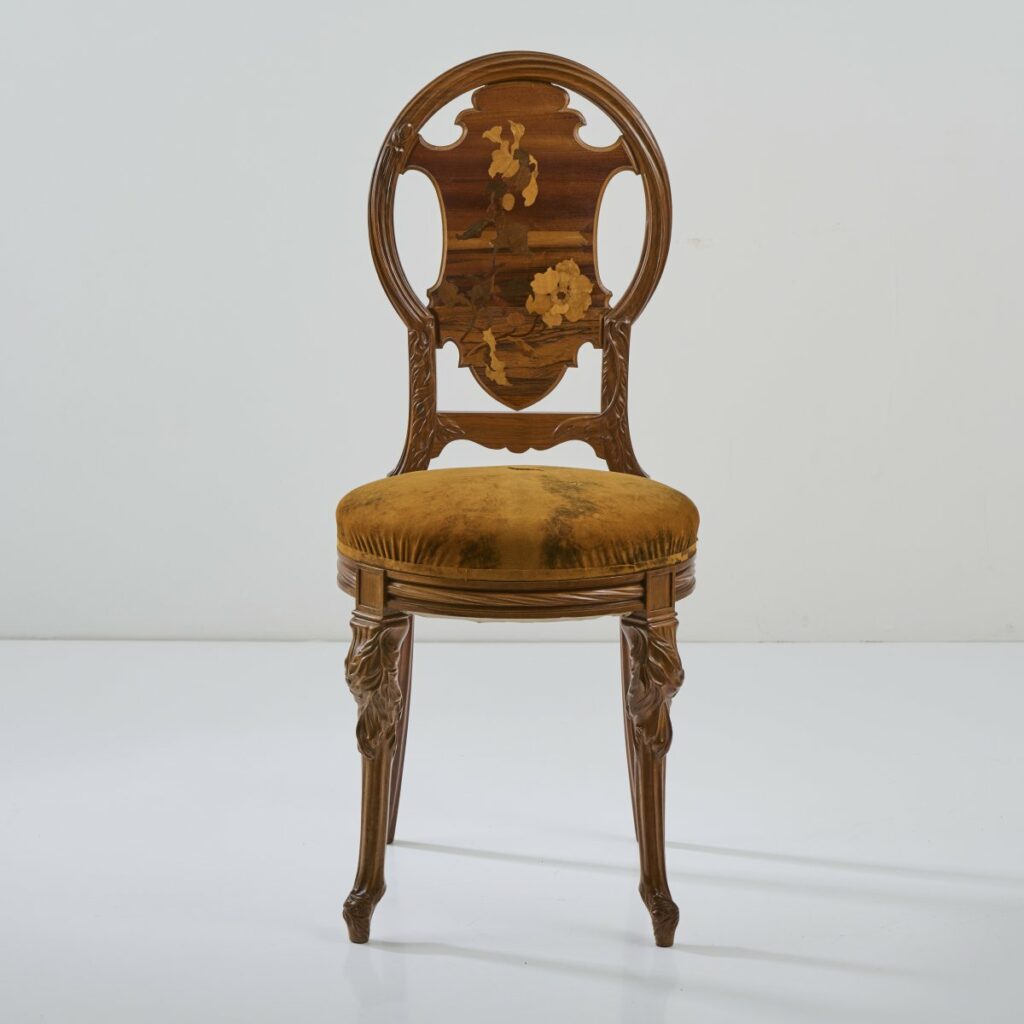
For Gallé, modernity did not mean the introduction of stylistic novelties or merely pretty externals without deeper content and meaning, as he writes here, but rather his endeavor was to design furniture according to the needs of modern man. For Gallé, the connection between the concepts of truth and beauty formed the basis for the design of a piece of furniture. In his opinion, beauty could be achieved if the laws of nature’s growth, its structures and basic principles were observed with great sensitivity, because nature offered infinite possibilities in its diversity. The basic structural elements of the furniture should not be covered by details, the joints should not be concealed, but modeled true to nature. According to Gallé, to solve this problem, one should observe how the branches of a plant grow out of the stem, how leaves attach to the branch, or how the flower is connected to the stem. Furniture designed according to these guidelines, he said, is a mirror of life and puts the truth of nature above any artificial eclecticism. In turn, Gallé saw the smooth surfaces of his furniture as an unpainted canvas, as it were, on which he could depict floral themes through the ingenious combination of different colored woods. He was particularly enthusiastic about the techniques of marquetry and used them with great imagination in a quality never seen before. Moreover, he sometimes supplemented them with additional inlays of glass or other materials.
The writer and symbolist Count Robert de Montesquiou writes in the sixth chapter of his work „Les Roseaux Pensants“,which he had dedicated to Gallé, to these marquetry pictures: „From each line of a grain, a new harmony flows into the eyes. A small depression of the terrain, the course of a stream, a small irregularity of the grain, which could come from a branching, becomes a cloud. The marqueterie completes the picture. One suspects, one knows the secrets that the heart of a felled tree entrusts to a cabinetmaker like Gallé; the essence of a tree speaks through him.“
For Philippe Garner, a profound connoisseur of Emile Gallé’s work, the artist was ultimately a poet who used glass and wood instead of words. His goal with his furniture was to create something that could be touched and felt, three-dimensional works of art that were as poignant and moving and as rich in nuance as poems.
Dr. Marcus Oertel
